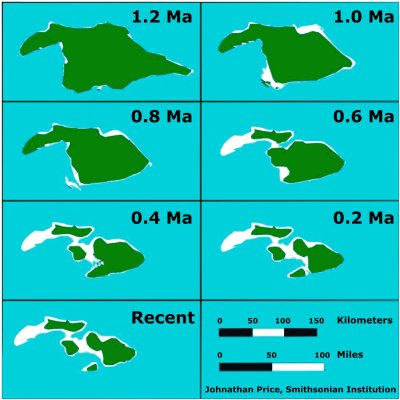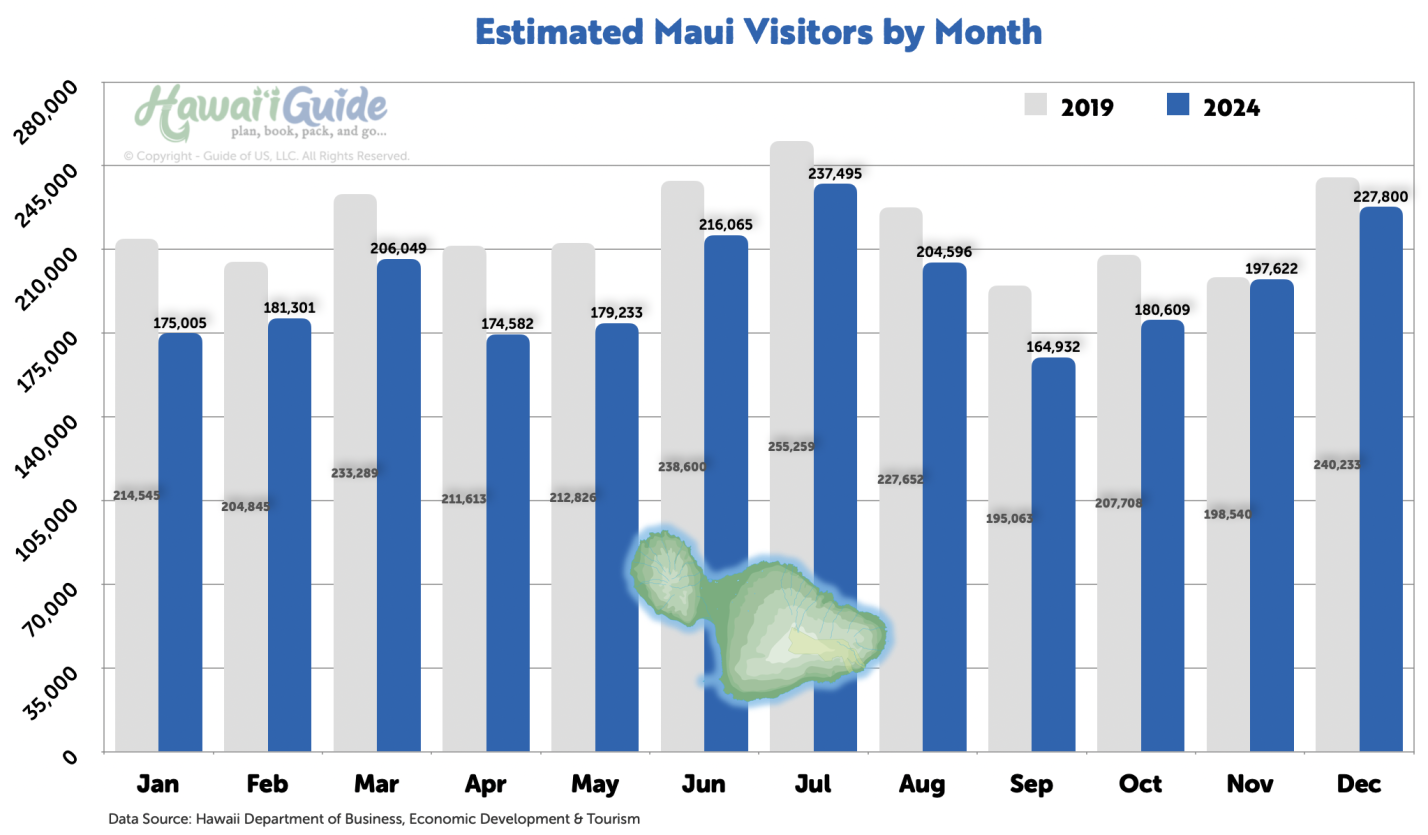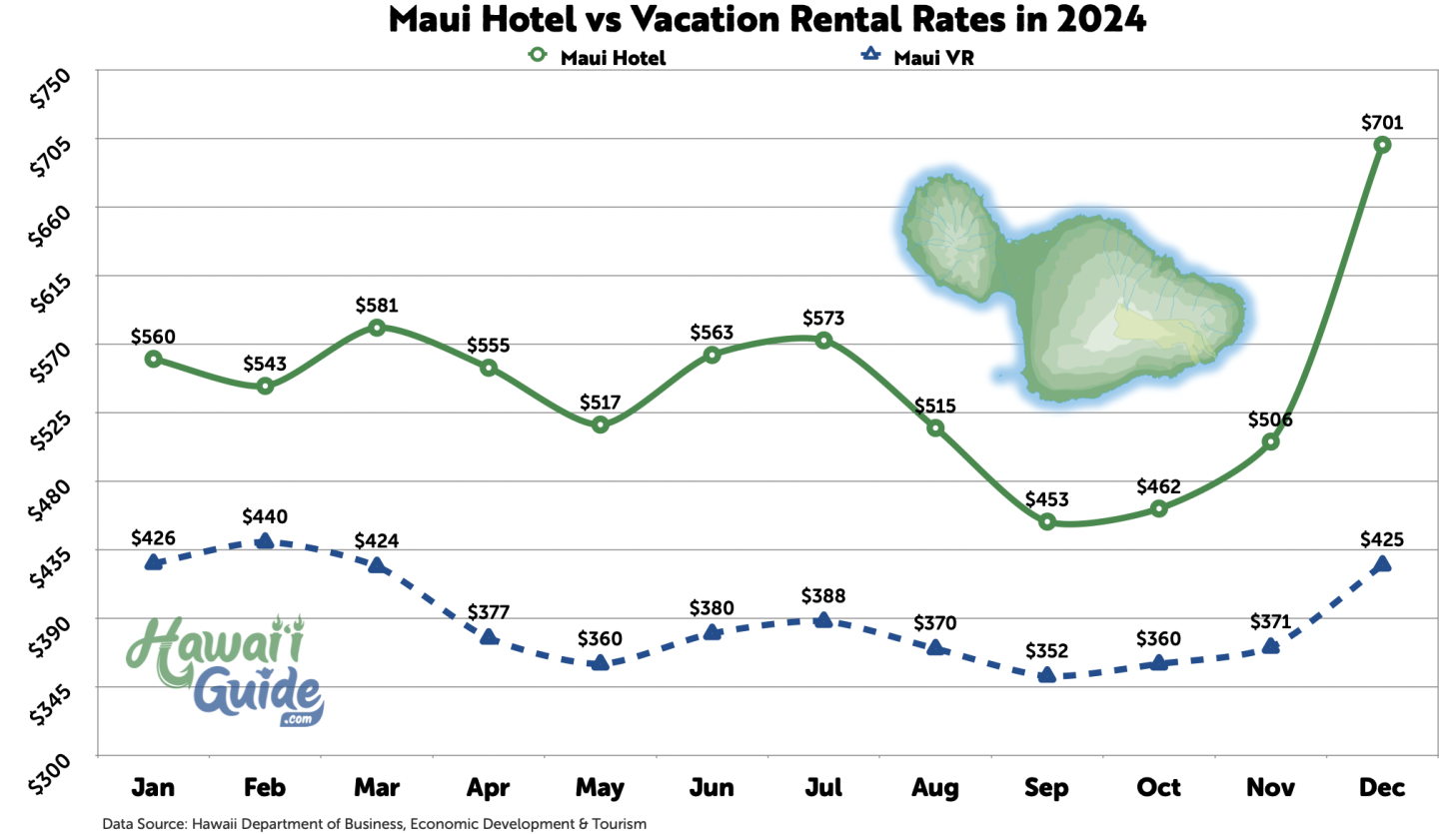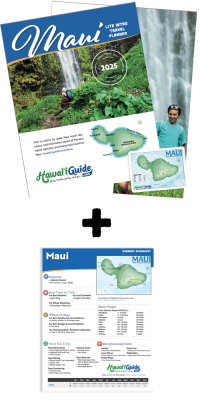03-22-2025
John C. DerrickMauiThe Valley Island
Maui Travel Guide
Visitor information on Where to Stay, Best Maui Things to Do, and more...
This article may contain affiliate links. We earn a small commission at no extra cost to you. Mahalo!
The Valley Island
Maui Visitor Guide
Maui has been a favorite tourist destination for decades because it represents the quintessential tropical getaway. With its beautiful coastal views, eclectic volcanoes, wildlife sanctuaries nearby, and a wide majority of the island left wild and free from rampant development, there are countless things to do in Maui that will leave you authentically charmed!
Maui has a lot going for it, especially for such a small island. It combines some of the best food, shopping, and entertainment choices from several of the other Hawaiian islands while emphasizing outdoor fun rather than a late-night party scene, like Oahu, which makes plenty of regular visitors happy.
Maui has several small towns, especially along the coast, giving much of the island a small but not rural vibe. Maui is not as large or varied in terrain as the Big Island or as weathered and verdant as Kauai. Still, its 10,000+ foot volcano Haleakala, combined with the incredible coastline views along the Road to Hana and unique places like the 'Iao Valley and Wai'anapanapa Black Sand Beach, make Maui a unique and special place to visit all on its own
Maui's Ongoing Recovery
Maui is still healing from the devastating Lahaina wildfires of August 2023, and while the island remains a place of immense beauty and aloha, we encourage visitors to travel with mindfulness and respect. Many residents are still rebuilding their lives, and your visit can make a meaningful difference when approached with care. Supporting local businesses, choosing responsible tour operators, and being sensitive to the ongoing recovery efforts are all ways to give back while experiencing Maui’s incredible landscapes and culture. As the island continues to heal, we ask that you travel with kindness, patience, and an open heart.
Grab Your Free 2025 Guides!
Maui Intro Visitor Guide
+ Our Summary Guidesheet!
Includes the top must-see & do attractions, best times to visit, a monthly weather & visitor summary, and our tips on how to save when booking your car rental, tours, and activities. Plus, grab our free Maui Summary Guidesheets. Check out our 2025 Maui Visitor Guides.
Haleakala
Haleakala at Dawn - Sunrise above the clouds
Often called the "Playground of the Wealthy," Maui definitely caters to those looking for more expensive accommodations yet is spared the crowds of Oahu. But don't fret if top-notch accommodations aren't in your plans - Maui caters to all types, including the budget-conscious. The island has a reputation for being a playground for all tourists, not just the super-rich. Whether you're looking for the best Maui beach, a great bed & breakfast, or even a bamboo forest hike, we've assembled all the Maui essentials here.
Everything you need to know about Maui is here in one convenient place:
- Maui travel tips & information - everything you need to know about Maui
- Determine when to travel to Maui - which time of year is the best?
- Discover the perfect Maui hotels & accommodations or our excellent selection of Maui tours & activities
- Explore Maui's landmarks & attractions
Maui Visitor Information
Our Top Valley Isle Travel Tips
Maui is the second-most-visited island in Hawaii, with around 2.7 to 2.9 million visitors annually. Tourism greatly affects the island's character, and it boasts a wide assortment of accommodation and activity choices.
Maui is also the second-largest landmass in the Hawaiian island chain, which consists of eight major islands and 124 islets. The archipelago comprises numerous volcanic islands in the central Pacific Ocean, stretching in a 1,500-mile crescent from Kure Island in the northwest to the Big Island of Hawaii in the east, encompassing 6,459 square miles. The eight major islands at the eastern end of the chain are, from west to east, Niihau, Kauai, Oahu, Molokai, Lanai, Kahoolawe, Maui, and the Big Island of Hawaii.

Maui Nui (Credit: Wikipedia)
Geologic History of 'Maui Nui'
Maui Nui or 'Greater Maui' is the geologic name given to a prehistoric Hawaiian Island built from seven shield volcanoes. Nui means "great/large" in the Hawaiian language.
A little over a million years ago, the island was significantly large than the island we think of as Maui today. They didn't separate until around 200,000 years ago, partially due to sea levels rising due to glacial melting. Once encompassing the islands of modern-day Maui, Moloka'i, Lana'i, Kaho'olawe the ancient shield volcanoes slowly settled into the Pacific Ocean seafloor by subsidence, and the volcanoes were additionally weathered by erosion to slowly separate into the distinctly different islands as they appear today.
At their largest, the islands of Maui Nui were a combined 5,600 square miles in size (14,600 sq km) - giving them a land area over 40% larger than the Big Island today.
On the corresponding graphic, 'Ma' is an abbreviation for mega-anna, millions of years ago. The light and dark shading show the extent of land during low and high sea stands of glacial cycles.
Hana Hwy
Maui Transportation
Transportation on Maui is diverse, allowing visitors to choose based on their preferences and the nature of their itinerary.
- Car Rentals: Renting a car is a popular choice (we recommend Discount Hawaii Car Rental), allowing you to explore the island at your own pace. Maui's attractions are spread out, making a car a convenient choice.
- Public Buses: Maui Bus operates a public transit system that covers various parts of the island. It's an economical choice, though it may be less convenient due to its schedule and route limitations.
- Shuttle Services: Some resorts offer shuttle services to popular destinations, providing a hassle-free option for guests.
- Bicycling: Maui's picturesque landscapes make biking a delightful experience, and bike rentals are available in several areas.
- Taxis and Ride-Shares: Taxis and ride-share services like Uber and Lyft operate on Maui, offering a convenient option for short distances or if you prefer not to drive.
- Walking: In more compact areas like Ka'anapali and Wailea, walking is a feasible way to get around, enjoy the scenery, and immerse yourself in the local atmosphere.
Considering the transportation options in advance can help visitors make the most of their Maui experience, whether they prefer the flexibility of a rental car, the eco-friendliness of biking, or the convenience of public transit.
Maui Visitor Data

Maui 2024 vs 2019 Visitor Numbers

Maui 2024 Hotel vs Vacation Rental Rates

Published by: John C. Derrick
Founder & certified Hawaii travel expert with 20+ years of experience in Hawaii tourism.
Affiliate Disclosure: We may earn commissions from some travel partners (like Amazon or Expedia) which helps us maintain this site. These links are at no extra cost to you and don't impact our honest & unbiased recommendations. Remove all the ads →

Try out our new AI Powered
Search & Chatbot →




